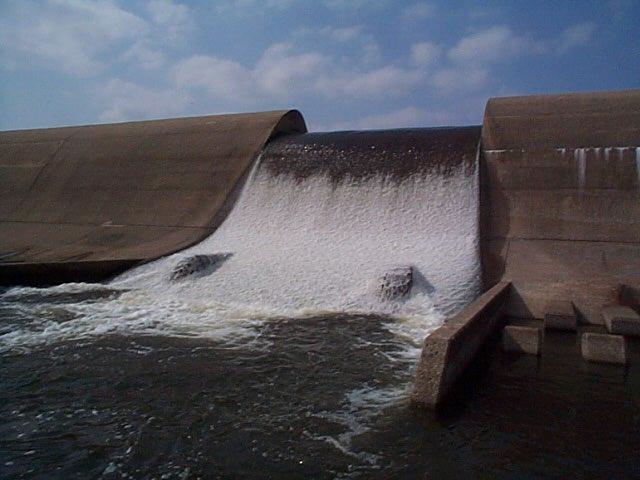Dam has a potential of dangers due to its impounding water. Failure on its structures can cause disaster in the downstream areas. It is important therefore to make sure that the structures in dam facilities are in good condition. Long operation of dam can cause the structures cracking, leaking, instable and ultimately failure. By routine inspection, it is expected that preliminary problems can be identified. Furthermore, necessary actions can be done to stop the propagation of its problems. One of the requirements that has to be done in dam operation is safety inspection. Usually it is required to be performed annually and will be reviewed every five years. Check this link for further detail information on dam safety procedure.
I have involved in annual dam safety inspection for hydraulic structural part. Therefore, I want to share here what kind of preparation that need to be done before inspection will be performed. Hydraulic structures in dam facilities can be vary depend on its function (water supply, hydropower, flood control, etc). It is important therefore to know what kind dam that will be inspected. The following are important information that need be known before the inspection:
1. Type of dam
2. Dimension of dam
3. Year of construction
In here, I'll only discuss about hydraulic structures. Of course there are other aspects that also need to be considered such as geology, geothecnics, electrical & mechanical, structure, hydrology, etc. Before conducting the inspection, potential problems on hydraulic structures can be identified from the characteristics of its flow. If the flow is calm or stagnant, probably there will be sedimentation problem while high flow can cause scouring, leaking and abrasion.
Generally hydraulic structures that exist in dam facilities are: spillway, tunnel outlet, stilling basin and tailing channel. Spillway is constructed to protect dam embankment during high water level. This structure has many type such as bellmouth, overfall, sidefall, etc. Bellmouth spillway usually exist in dam for water supply. As its name, the shape is likes bell mouth. When water level is high enough, it will flow to its mouth and goes to the tunnel. The following are pictures showing types of spillway.
| Side Channel Spillway |
| Bell-mouth Spillway |
 |
| Overfall Spillway |
As you can see on the figures above, flow in the spillway is high. Abrasion, leaking and cavitation could happen on that structures. Inspection will only be done when the water level is not higher than the spillway structure. The most critical area of this structure is on the surface concrete. Probably white stains due to abrasion easy to find. Cracking also commonly happened on this structure.
The next hydraulic structure that need to be checked is tunnel. This structure is only available for spillway with bellmouth type. For inspecting inside the tunnel, usually it requires safety permits for confined spaces. Therefore it should be prepared before the inspection will be conducted. Check the condition of surface tunnel especially in the joints and bottom where water drop occurred.
Water that flowing from spillway has high energy and it needs to be dissipated otherwise it can endanger the structure. The structure used for dissipating the water energy is Stilling Basin. The appear of this structure is like this:

You can see the baffle was designed to reduce the flow and also dissipate the energy of water. Subsequently, water flow and energy has reduced when it reaches the water body.
No comments:
Post a Comment